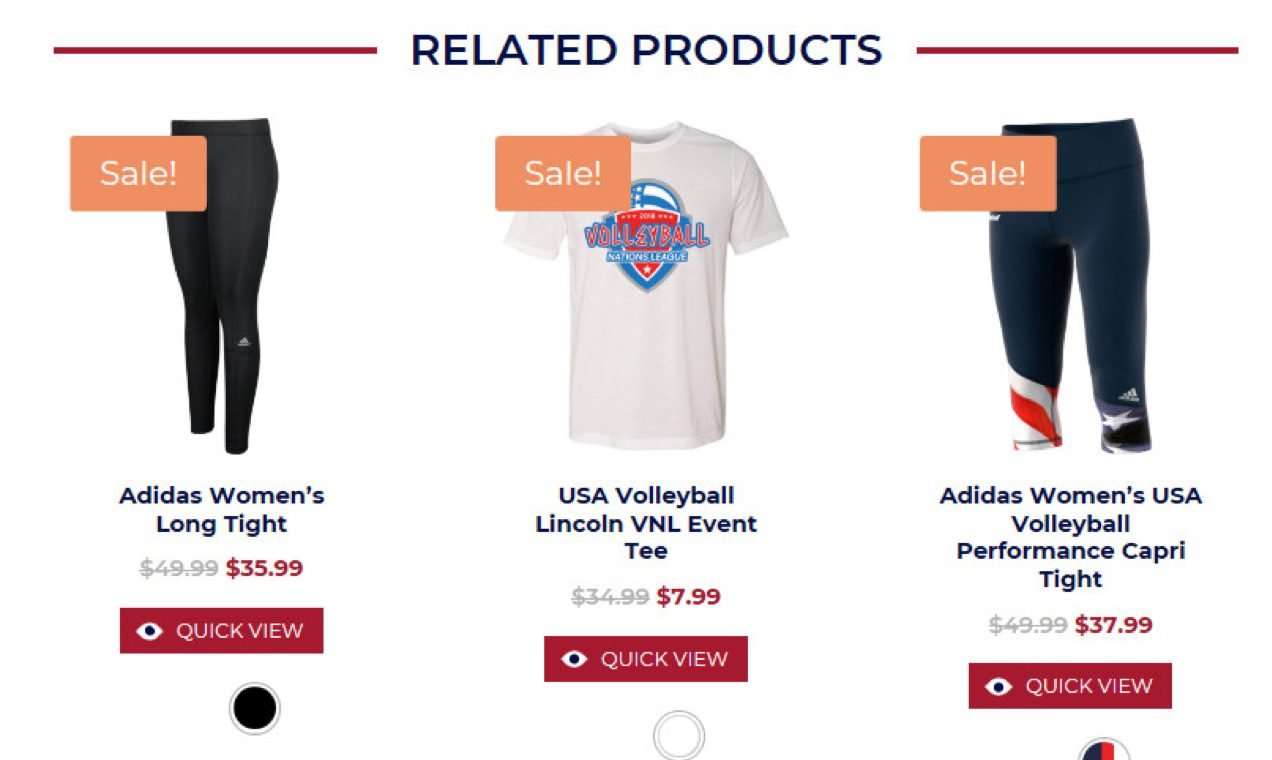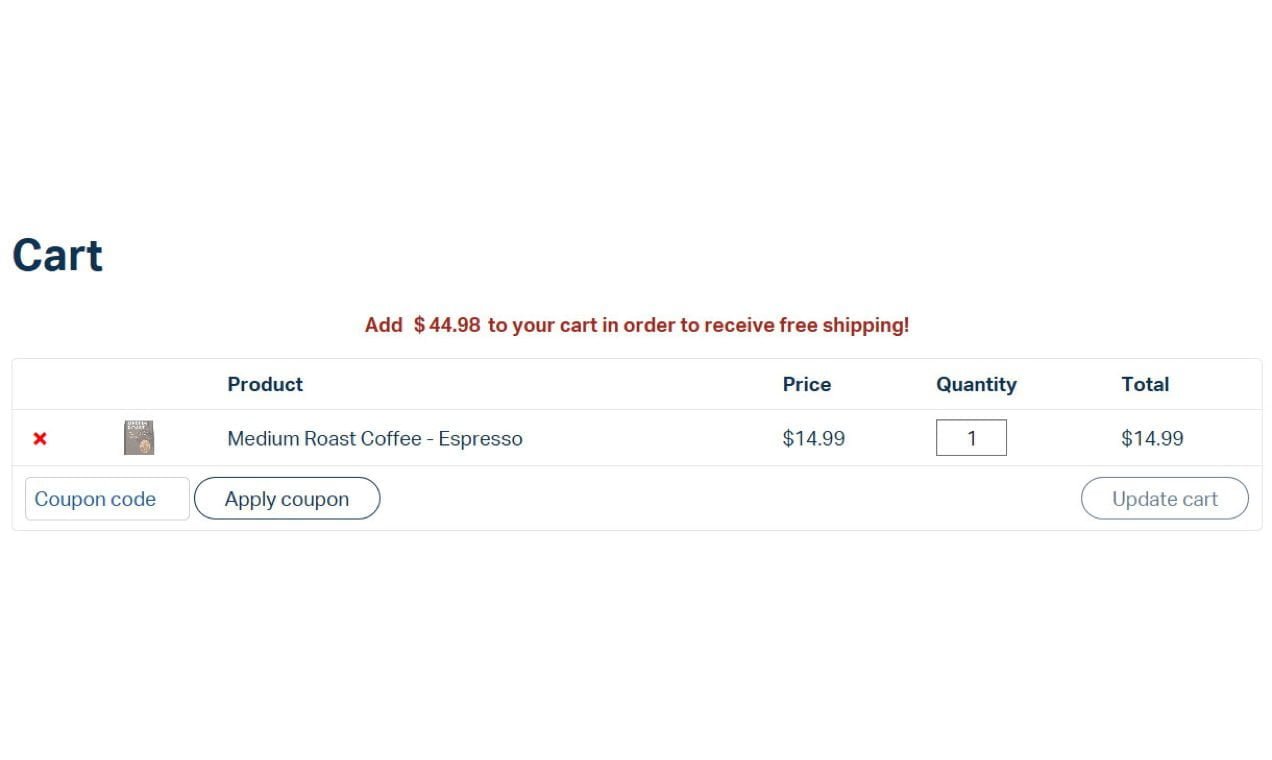Your eCommerce store can gain revenue from two types of customers: New customers and existing customers. In both cases, you can dramatically increase sales by offering helpful and relevant product recommendations in the form of upsells or cross-sells.
What’s the difference between an upsell and a cross-sell?
In brief, an upsell means you offer the same type of product at an increased price. This could be a more robust, more feature-rich, bigger, or more customized version of the product. “Would you like to upgrade to a larger size?” is a simple example of an upsell from takeout restaurants.
In contrast, when you offer additional product recommendations that complement the original purchase, you are offering a cross-sell. So upsells relate to different versions of the same product. Cross-sells relate to different products.
Consistently upselling and cross-selling to new and existing customers can increase revenue double digits, depending on your business. Not using this time-tested marketing strategy means you’re leaving money on the table.
5 Upselling and Cross-selling Tips and Tricks
Here are five ways to maximize revenue from upselling and cross-selling.
Make It Relevant
First, and most importantly, any products or extra features you recommend as upsells and cross-sells must be relevant to the original purchase. If someone buys yogurt from your online grocery, don’t cross-sell them with toilet cleaners.
The buyer should see the natural relationship between what they’re buying and the additional options you’re presenting.
Make It Helpful
If someone buys a set of steak knives, it helps that person if you also offer a place to store them. Cross-selling them with decorative steak knife holders isn’t just relevant, it’s helpful. You’re making life simpler by solving two problems at once.
Even better, you can offer a bonus set of knives or other cutlery as an upsell. Again, you’re helping by providing a relevant offer.
Make It Desirable
Neil Patel recommends a three-fold approach to upselling and cross-selling: Your upsells should be your most reviewed, most relevant, or best-selling products and services.
Why? Because these workhorses have already proven to be your most desirable products. Since so many other people have bought and reviewed them, you know these are more likely to appeal to your current shoppers too.
Make It Urgent
When applicable, you should take every opportunity to limit the availability of a product or service, either by limiting quantity or limiting the purchase window.
For a service or client-based business, “I can only accept 12 new private clients” increases the urgency to buy now.
For product-based businesses, you may have some products with limited shelf-life. Some food products are only available at certain times of year. You might have only manufactured a fixed number of a particular product. Or you have discontinued or altered it from the original, meaning that whatever remains of the original product supply represents the last opportunity to buy it.
Highlight these exclusive and limited opportunities as part of your upsell or cross-sell offers. This is the ‘use it or lose it’ concept.
Make It Easy
There are two sides to this. It should be easy for you and for the customer.
For the customer, make it easy to act on the upsell. For instance, don’t require them to start a membership just to claim the offer. But make it easy on yourself, too. With a WooCommerce store, the technology that powers your upselling and cross-selling strategies is already in place.
But to fully leverage the power of upselling and cross-selling, look to add an extension that elevates your eCommerce store’s capabilities by making this even easier.
Let’s explore in more detail a new and powerful extension for your eCommerce upselling and cross-selling strategy.
How Product Recommendations Can Boost Your eCommerce Revenue
The Product Recommendations extension first allows you to categorize your upsells and cross-sells by categories or tags. This saves you a lot of time over the built-in WooCommerce functionality, which requires that you set recommendations for each product individually.
So if someone purchases lipstick in an eCommerce store that sells beauty products, you can quickly offer cross-selling products tagged as ‘face’ or ‘eyes’, or however it makes sense to categorize your products.
In other words, you only need to categorize and tag your products one time. Every time you add a new product and want to create a set of upsell and cross-sell product recommendations, you can do so very quickly.
With the foundation of categories and tags in place, you can now execute all of the following strategies, and more, in very little time.
Recommend Products from Recently Viewed Categories
Someone who views multiple product pages for notebooks is clearly looking for… notebooks. If they’re also viewing pages for pens, tape, and lined paper, you can make a pretty confident assumption this person is in the market for school or office supplies.
So by recommending other products in those categories that they haven’t viewed, you may just hit upon the item they’re really looking for but may not have found yet. You’re making their shopping experience easier.
Choose Which Pages to Offer Your Product Upsells and Cross-sells
You can set your site to offer recommendations in several places:
- Product and category pages
- Checkout page
- Order confirmation page
Here’s a screenshot from the checkout page of a US Volleyball apparel WooCommerce business:

With a T-shirt already in the cart, these are the products recommended on the checkout page. You can see the category process at work here, as each product is relevant to the one already added to the cart. Someone buying a volleyball shirt could also be interested in any of these products.
Offer Trending and Top Rated Upsells and Cross-sells
Remember Patel’s advice? Your best-selling, most reviewed, and most relevant products make for the most effective upsells and cross-sells.
With Product Recommendations, you can place your most popular products on your shoppers’ order pages.
Help Your Customers Complete the Package
By using language like “Complete the Look” and “Frequently Bought Together,” you can encourage your customers to add relevant products to their purchases.
Someone who buys yoga pants from a fitness eCommerce store may need workout shoes as well.
If you notice certain products often being purchased together in your analytics, start recommending this combination to anyone who adds even one of those products to their cart.
Remind Them What They Forgot
Product Recommendations can also keep track of what a visitor has viewed during a shopping session. For products they viewed but did not add to their cart, you can set up a “Leave These Behind?” recommendation that reminds them what they looked at.
This strategy will increase your average order value, and your customers will appreciate the convenience you’re providing.
Ask Them to Reconsider
On the Order Confirmation page, you can tap in to the same convenience by asking “Still Looking for…?”, and then list the products they viewed but didn’t purchase.
Again, even if only one percent your buyers decide to re-enter the store and purchase additional products, isn’t that worth the one-time effort? Once this process has been set up and automated, it just runs itself.
You can tailor these recommendations specifically to what they purchased. And because your customer will face the additional hurdle of having to re-enter the purchasing process, you can incentivize them to climb the hill again by using one-time-only coupons and discounts. Since you bought this product, buy any one of these three items and save 10%, using this use-it-or-lose-it coupon, for example.
Use Free Shipping to Encourage More Spending
Here’s how this looks in a coffee-selling eCommerce store:

With the single sentence of “Add $44.98 to your cart in order to receive free shipping!”, you’re giving your buyers an alluring incentive to spend a little more. Online buyers love free shipping. Give them a specific dollar amount they must spend in order to earn free shipping, and you’ll get a lot of takers.
Encourage Impulse Buys
Remember ‘make it urgent’? That’s one of your best motivators for upsells and cross-sells.
You can accomplish this by recommending “Last Minute Deals” in the Product Recommendations extension. Here is where you could list items running out of stock, or date and time-limited special offers such as those related to a holiday.
Track Your Analytics
Finally, Product Recommendations includes all the analytics you need to optimize the various strategies you decide to use.
You can measure your revenue, views, clicks, conversions, and conversion rates for each product page. You can then calculate other metrics like average transaction size.
Armed with this data, you’ll quickly identify your most popular sellers, which ones get a lot of views but not a lot of buyers, your biggest moneymakers, and your worst duds.
Among other things, you can use this data to create more effective upsell and cross-sell recommendations.
The Key to Upselling and Cross-selling
Successful upselling and cross-selling is all about timing.
Offering a coupon special when a person first visits your page will produce a different response compared to offering the same special as an upsell on the checkout page.
With the Product Recommendations extension, it couldn’t be easier to present your upsells and cross-sells at the perfect time where the maximum number of shoppers will act on it.
Learn more about Product Recommendations

